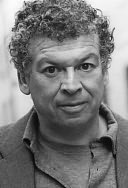- Shopping Bag ( 0 items )
Publishers Weekly
★ 05/05/2014In this exquisite chronicle, novelist and journalist Goldman (Say Her Name) takes readers into the heart of Mexico City, showcasing its vibrant complexity and grit. Grieving for his young wife Aura’s death five years earlier, Goldman explores his relationship with her native city against the backdrop of its changing leadership—a result of the 2012 presidential elections that restored the Institutional Revolutionary Party (PRI) to power after a 12-year absence. As Goldman notes, the Districto Federal (D.F.), as Mexico City is commonly known, mainly avoided the “catastrophe of the murderous narco war” because of the progressive leadership of mayors from the left-leaning opposing party, the PRD. Now with the PRI—and its ominous ties to the drug cartels—back in power, not even the D.F. seems immune to kidnappings and escalating violence. A perceptive, funny, and philosophical narrator, Goldman investigates the kidnappings of 12 youths in broad daylight; traces the evolution of a student movement, #YoSoy132, formed to protest the candidacy—and eventual election—of presidential candidate Peña Nieto; overcomes his fear of driving in a megacity of 22 million; and ponders the differences between Mexico and the U.S. in their approaches to culture, friendship, and grief. Throughout this remarkable book, Goldman is highly attuned to the pulse and rhythm of one of the world’s most captivating cities. Agency: ICM. (July)





Overview
Coming off the most successful book of a decorated career—Say Her Name (Cover of the NYTBR 4/10/11)—The Interior Circuit is Francisco Goldman’s timely and provocative journey into the heart of Mexico City.
“The Interior Circuit” is Goldman’s story of his emergence from grief five years after his wife’s death, symbolized by his attempt to overcome his fear of driving in the city. Embracing the DF (Mexico City) as his home, Goldman explores and celebrates the city, which stands defiantly apart from so many of the ...